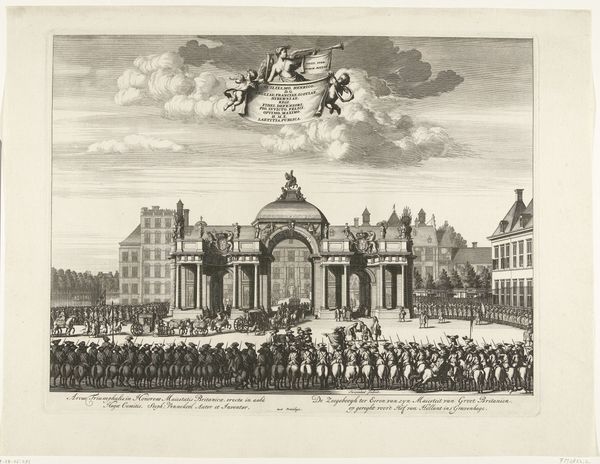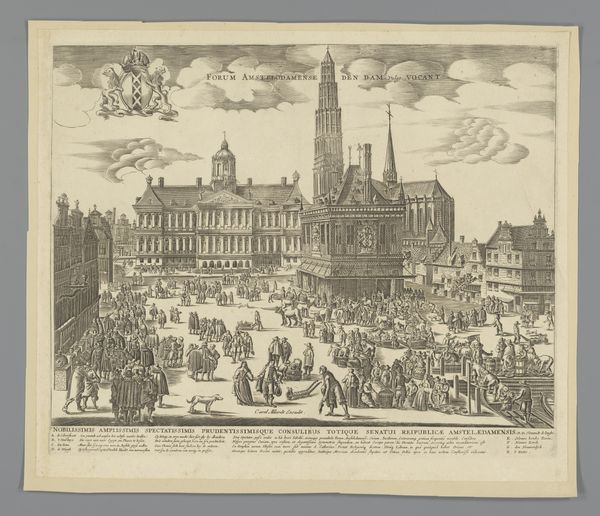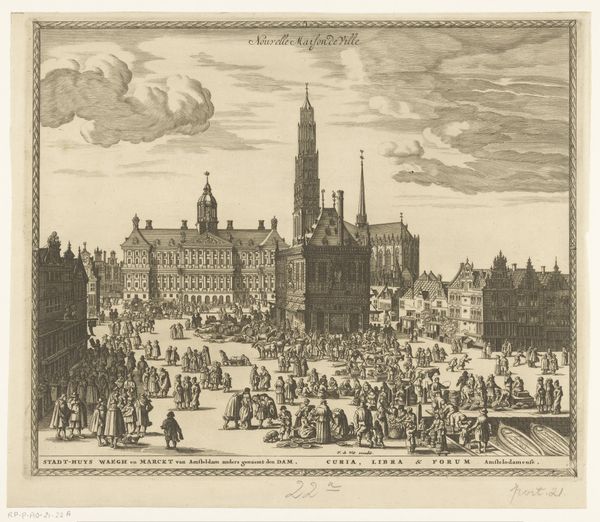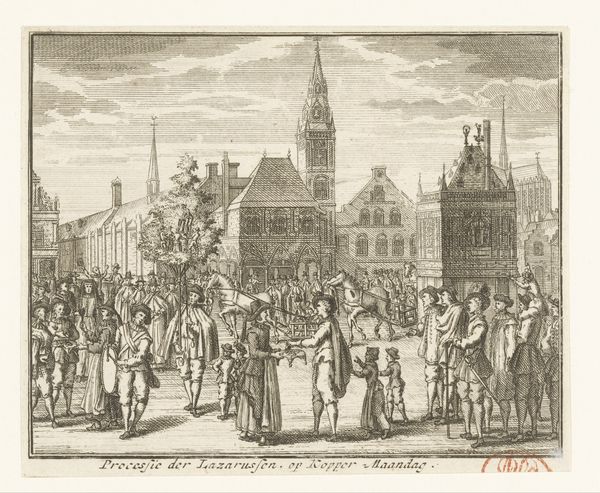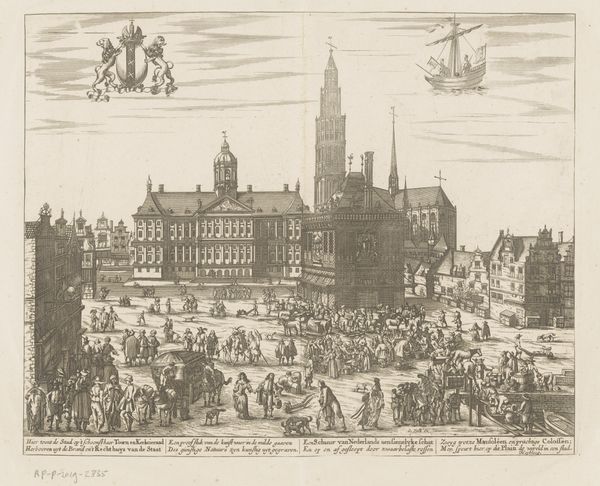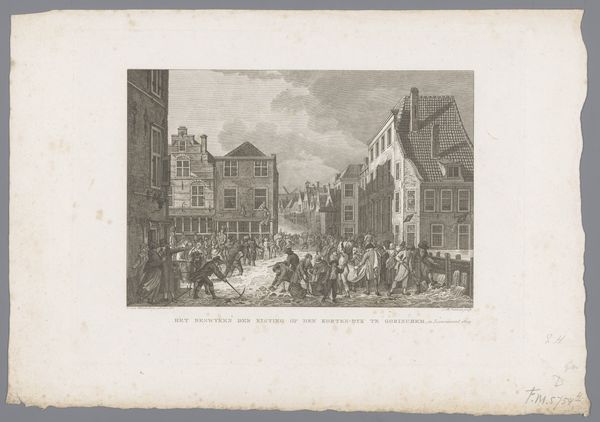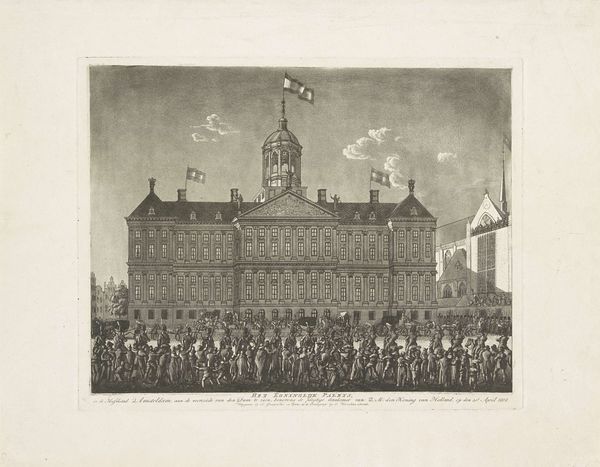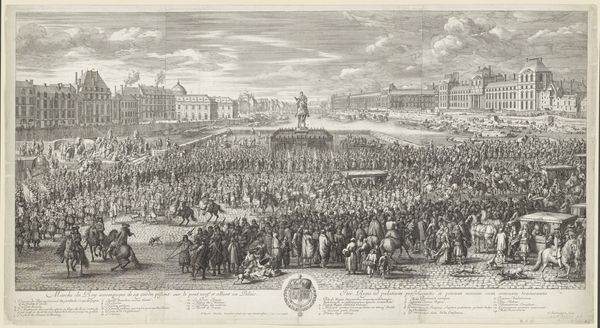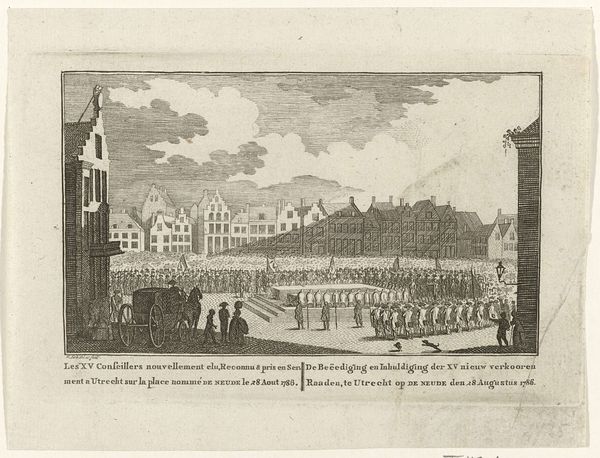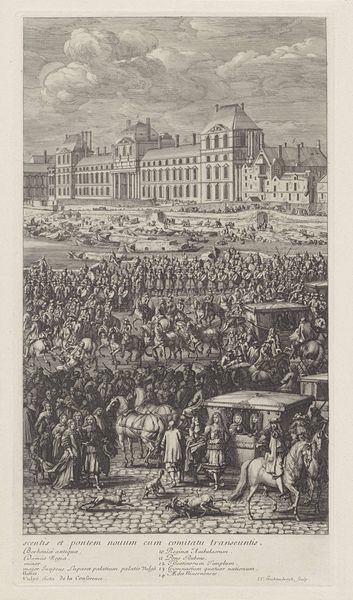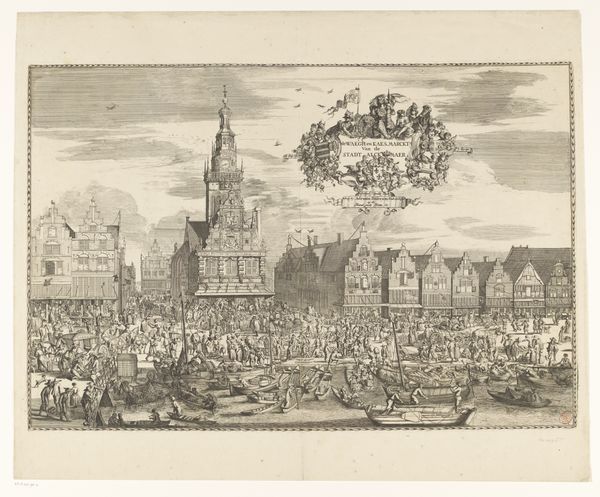
print, engraving
#
baroque
# print
#
old engraving style
#
perspective
#
line
#
cityscape
#
history-painting
#
engraving
Dimensions: height 262 mm, width 348 mm
Copyright: Rijks Museum: Open Domain
Editor: This is Bastiaen Stopendael's "Funeral Procession of Michiel de Ruyter, 1677," an engraving made between 1687 and 1701. It depicts a large procession with buildings looming in the background. It's striking how many people are depicted. How do you interpret the procession of figures against this backdrop? Curator: This print acts as a kind of cultural memory, doesn’t it? Note the deliberate staging. It's not merely a record; it’s a carefully constructed image meant to convey the gravity of the event and the importance of de Ruyter. What kind of symbols can we decode here? Editor: Well, there's the sheer number of people, all in dark clothing. It visually emphasizes de Ruyter's importance but also a collective sense of mourning. Curator: Precisely. And the cityscape itself, those imposing buildings – what do they represent? Editor: Power and permanence? Perhaps suggesting that de Ruyter's legacy will endure? Curator: Yes, power definitely. This connects with the tradition of state portraiture. In a sense, this engraving elevates a national hero by associating him with the very symbols of Dutch authority and identity. This image does not show simple grief; it performs civic pride and national identity through sorrow. Editor: That’s insightful! It is fascinating how one image can convey so much about collective emotion and power structures. Curator: Indeed, it is the potent intersection of personal grief and public persona crafted through carefully considered symbols and representation. Recognizing such constructions and embedded meanings allows a deeper engagement with this historical scene. Editor: Thank you. I will certainly keep these ideas of enduring legacy, crafted emotions, and symbolism in mind.
Comments
No comments
Be the first to comment and join the conversation on the ultimate creative platform.
